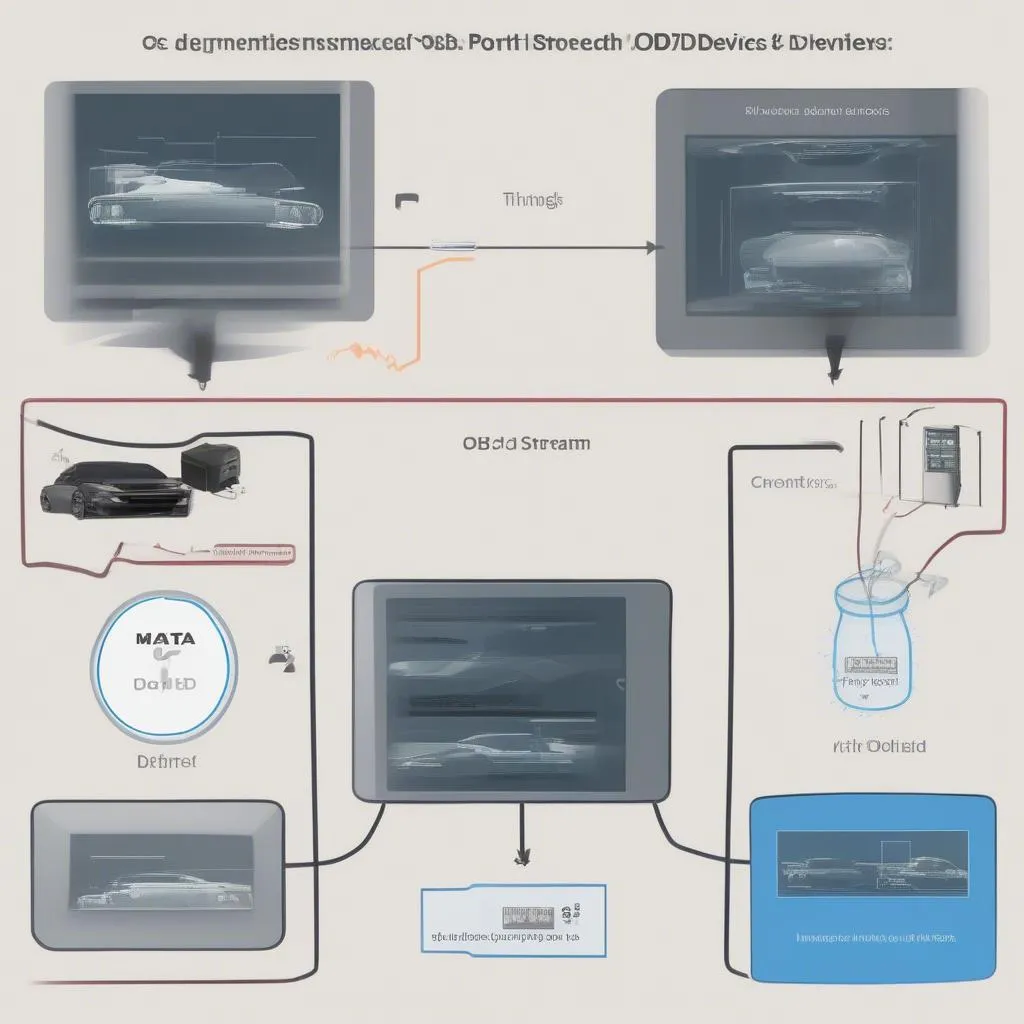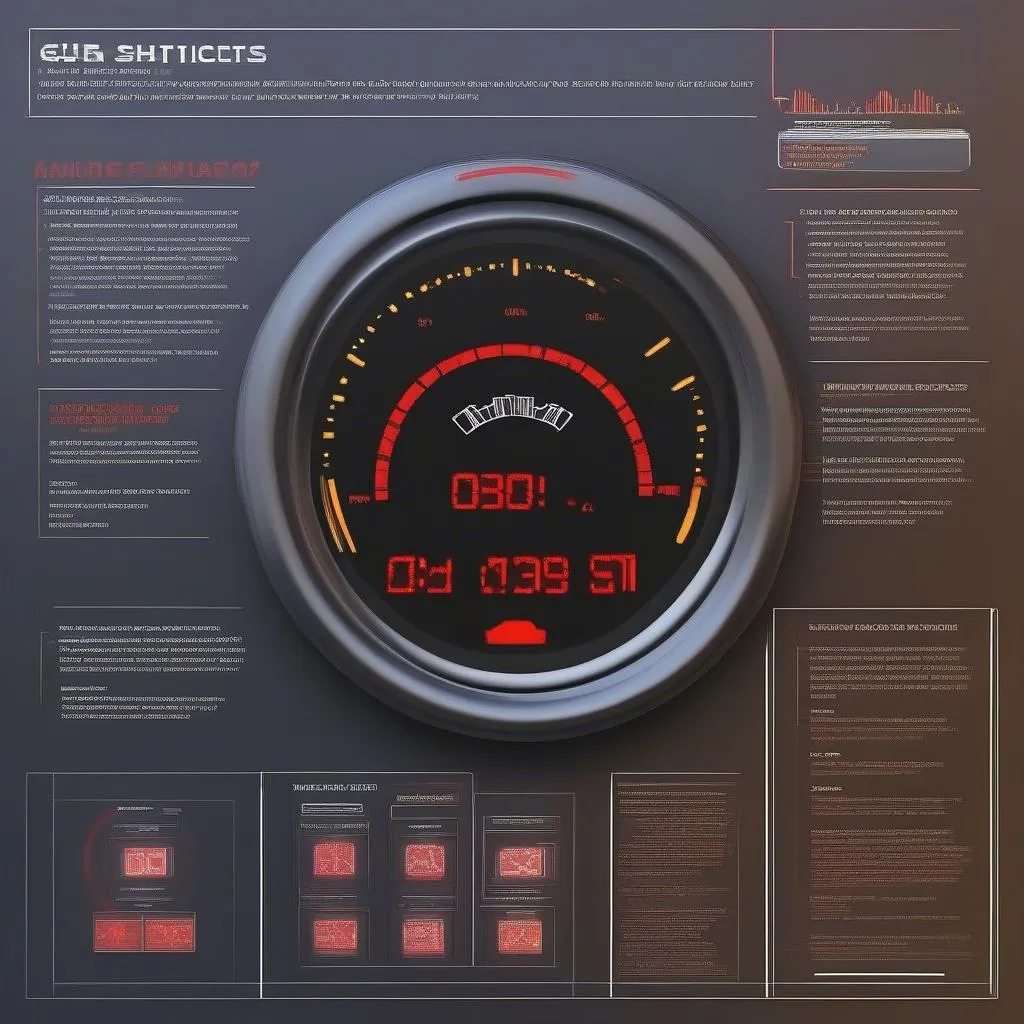“Two heads are better than one,” as the old adage goes. But does this wisdom hold true in the world of automotive diagnostics and OBD splitters?
Imagine this: you’re a car enthusiast, meticulously tracking your car’s performance and eager to diagnose any hiccups with your trusty OBD2 scanner. You’ve also invested in a real-time performance monitor. Both devices are vying for the same prized possession: your car’s OBD2 port. Enter the OBD splitter – a seemingly magical Y-cable promising to double your diagnostic fun. But do OBD splitters really deliver on this promise, or are they just a recipe for electronic chaos under your dashboard? Let’s delve into the intriguing world of OBD splitters and discover if they truly live up to their potential.
Understanding the Allure of the OBD Splitter
The concept of an OBD splitter is deceptively simple: split one OBD2 port into two, allowing simultaneous connection of multiple devices. This idea is particularly tempting for:
- Car Enthusiasts: Imagine monitoring real-time performance data while simultaneously scanning for trouble codes – a dream come true for the data-driven driver.
- Professional Mechanics: The ability to use a scan tool and a data logger concurrently could streamline diagnostic and repair procedures.
- Fleet Managers: Keeping tabs on multiple vehicles with GPS trackers and performance monitors becomes a breeze with multiple OBD2 connections.
But before you rush out to grab an OBD splitter, it’s crucial to understand the potential pitfalls lurking behind this seemingly straightforward solution.
The Harsh Reality: OBD Splitters and the Data Bottleneck
While the concept sounds enticing, the reality of OBD splitters is often more nuanced. Here’s why:
Data Collisions and Communication Breakdowns
Your car’s OBD2 port is essentially a communication gateway, transmitting data between your car’s computer (ECU) and the connected device. Introducing a splitter into this equation can create a communication bottleneck, similar to two people trying to talk simultaneously on a single phone line.
This data collision can lead to:
- Inaccurate Readings: Both devices might receive incomplete or corrupted data, rendering the information unreliable.
- Connection Issues: One or both devices might struggle to maintain a stable connection, leading to intermittent disconnections or error messages.
- Software Conflicts: Software running on different devices might clash, causing malfunctions or data errors.
As renowned automotive electronics expert, Dr. Elena Petrov, author of “Automotive Communication Networks: A Systems Approach,” cautions, “While conceptually simple, OBD splitters introduce significant complexity to the communication protocol, increasing the likelihood of data collisions and interpretation errors.”
Power Drain Dilemmas
OBD2 ports also supply power to connected devices. Splitting this power source can lead to insufficient voltage reaching each device, potentially causing malfunctions or even damage. This is particularly concerning with power-hungry devices like GPS trackers or some performance monitors.
Feng Shui and the Flow of Data
Interestingly, the principle of data flow through an OBD splitter aligns with the ancient Chinese philosophy of Feng Shui. Just as a cluttered room disrupts the flow of energy, a congested OBD port can hinder the smooth transmission of data. By introducing an OBD splitter, one might inadvertently disrupt the harmonious communication between your car’s systems, potentially leading to unforeseen issues.
 OBD Splitter Data Collision
OBD Splitter Data Collision
So, Do OBD Splitters Ever Work?
The short answer? Sometimes.
Here’s when an OBD splitter might work:
- Passive Devices: If you’re using two devices that only read data (like a basic code reader and a GPS tracker), the chances of successful simultaneous operation increase.
- Specific Splitter Models: Some high-quality OBD splitters are designed with built-in data management and power regulation features that mitigate the risks outlined above.
However, it’s crucial to remember that using an OBD splitter is always a gamble. The complexity of your car’s electronics, the specific devices you’re connecting, and even the quality of the splitter itself can influence the outcome.
Proceed with Caution: Alternatives to OBD Splitters
Instead of relying on the unpredictable nature of OBD splitters, consider these alternatives:
- Prioritize Your Devices: Determine which device is most critical for your needs and use that one primarily.
- Switch Between Devices: If you need to use multiple devices, connect them individually when necessary.
- Explore Wireless Options: Many diagnostic tools and performance monitors now offer Bluetooth or WiFi connectivity, eliminating the need for a physical connection to the OBD2 port.
 OBD Splitter Warning
OBD Splitter Warning